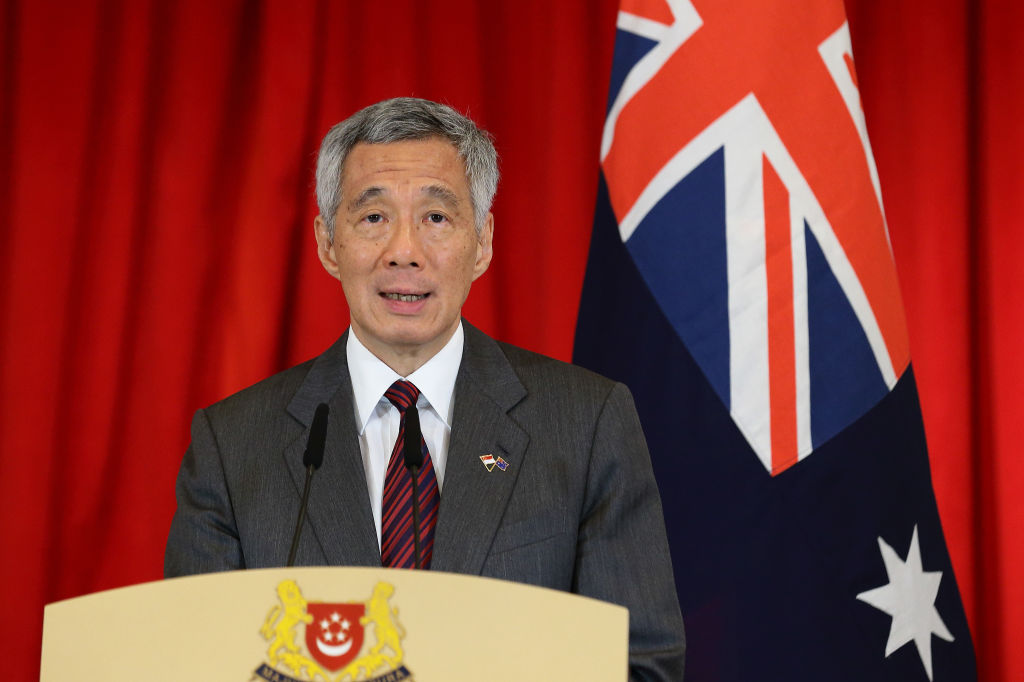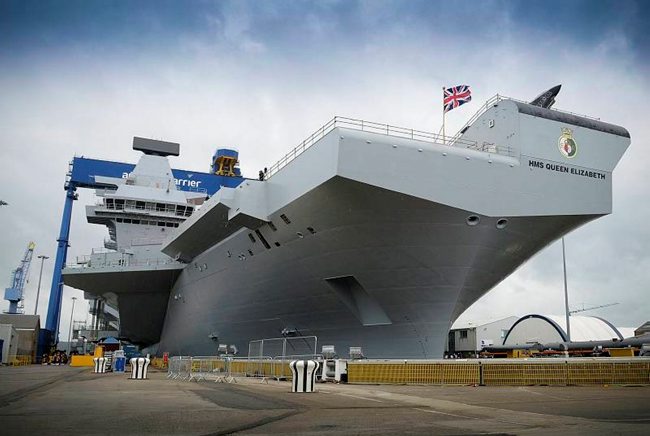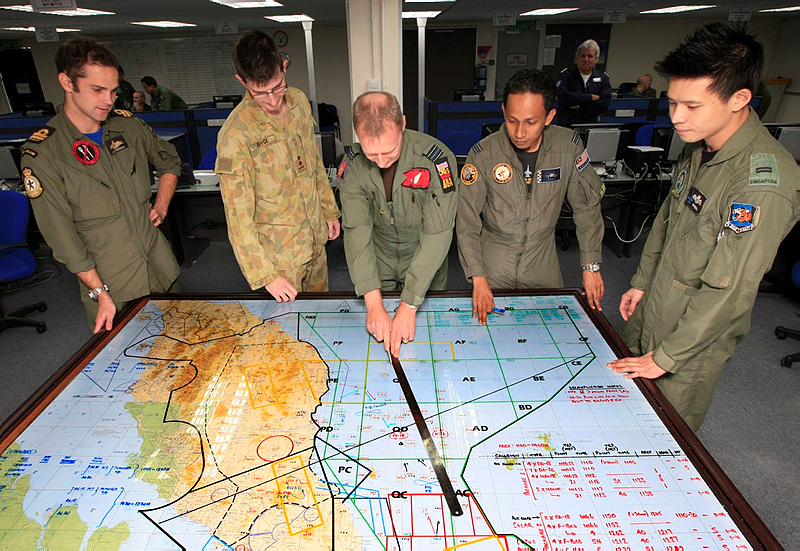Can the ‘natural partnership’ between Australia and Singapore survive great-power rivalry?

As Singaporean Prime Minister Lee Hsien Loong visits Canberra this week for the annual Australia–Singapore leaders’ dialogue and meets Anthony Albanese for the first time since the Labor leader became prime minister, the focus should be on whether the bilateral relationship will continue along a meandering path of comfort or set itself to address the challenges of our time.
It is often said that while Indonesia is the most important Southeast Asian country to Australia, Singapore is its most enduring partner, owing to a longstanding convergence of strategic interests.
In 2015, Prime Minister Tony Abbott said that Australia and Singapore are ‘natural partners’ whose interests ‘could hardly be more complementary’. That view is shared in Singapore. When Foreign Minister Penny Wong visited in July this year, Singapore’s Foreign Minister Vivian Balakrishnan opened their press briefing by referring to the two countries as ‘longstanding natural partners’ with a ‘huge reservoir of strategic trust’.
This ‘natural partnership’ is based on a history of converging security interests. Australia was the first country to establish diplomatic relations with Singapore following its independence in 1965. During the Cold War, common threat perceptions about the spread of communism and a potentially expansionist Indonesia, as well as fears about reduced US engagement in Asia in the lead-up to its withdrawal from Vietnam, prompted the two to establish the Five Power Defence Arrangements in 1971 with Malaysia, New Zealand and the UK.
In the post–Cold War era, Australia–Singapore cooperation continued to deepen over terrorism and maritime security issues. Singapore is one of the few countries that not only regularly trains its forces on Australian soil but also holds exchanges of military and civilian defence officials. The two countries also continue to hold a shared belief in the need for a sustained US presence in the Indo-Pacific and agree that the US ultimately plays a crucial stabilising role by deterring states (including, but not limited to, China) from using military force.
Complementing the common security concerns is convergence in diplomatic and strategic preferences. The two countries signed a comprehensive strategic partnership in 2015 and are leading members of the Comprehensive and Progressive Agreement for Trans-Pacific Partnership, understanding that it’s far more than a trade agreement.
Like anything ‘natural’, however, there are imperfections.
The level of shared interests across defence, foreign affairs, trade and security issues allows for greater rhetoric than action and there’s a real risk of the partnership being one of perception over substance.
Despite their common interests, the two countries have different strategic outlooks. While Australia sees itself as a regional power with global interests, Singapore views itself as a small state focused on survival. The ‘shared interests, different strategies’ approach is best illustrated in how the two countries are trying to manage the current era of strategic competition. Australia and Singapore share common concerns about China’s maritime adventurism and sabre-rattling over Taiwan, and the long-term strategic implications of Beijing’s growing power. It was to former Singaporean foreign minister George Yeo that China’s foreign policy czar Yang Jiechi once infamously quipped: ‘China is a big country and you are small countries, and that is a fact.’
Yang knew his target—Singapore’s foreign-policy approach has long been informed by the deeply realist world view of its political class, shaped by a sense of insecurity that is rooted in its small size, status as an ethnic-Chinese-majority country surrounded by Indonesia and Malaysia, and geographic location along two of the world’s most important sea lanes of communication (the Malacca Strait and the South China Sea). Lessons of history have taught Singaporeans the importance of pragmatism as a condition of survival. As a trade-dependent economy, Singapore is also innately vulnerable to geopolitical, economic and diplomatic shocks.
A strategic environment mired by intense great-power competition risks destabilising Singapore’s own domestic politics, a ruling People’s Action Party has long depended on economic performance as a source of regime legitimacy. At a time when the Lee dynasty—the political family that has ruled Singapore for nearly 50 (of 63) years—is coming to an end with Lee’s imminent stepping down a prime minister, the political elite is very keen to ensure that the international system remains stable enough not to create shocks that could undermine a smooth transition of power and the continued dominance of the People’s Action Party.
In this context, Singapore has occasionally been wary of actions that risk intensifying great-power competition. Arguably Southeast Asia’s most vocal leader on international affairs, Lee has spoken many times of the need for China and the US (and Australia) to find common ground. It has, to some extent, enabled a moral-equivalency narrative to form about the two major powers that belies the reality of Beijing’s aggression.
And, to some extent, Beijing gets what it wants from Singapore—a policy of non-alignment that, even in the face of China’s maritime adventurism and persistent influence operations and disinformation campaigns in Southeast Asia, sees Singapore being cautious about openly criticising China.
However, there’s more to Singapore’s strategy than simply an ignorance-is-bliss approach. Its actions behind the scenes are often a powerful signal of its potential regional influence and importance to Australia. For example, Singapore privately advocated for Australia (and not China) to become ASEAN’s first ‘comprehensive strategic partner’ in 2021 to reward Canberra’s longstanding commitment to diplomatic engagement with the region while also dispelling the impression that China is ASEAN’s most important partner. When the AUKUS pact was announced in September last year, unlike the concerns expressed by leaders in Jakarta and Kuala Lumpur, Lee expressed his hope that AUKUS would ‘contribute constructively to the peace and stability of the region and complement the regional architecture’.
Albanese’s meeting with Lee is therefore an opportunity for Australia to recognise Singapore’s strategic view of the world, as well as to help Singapore increase its trust in the power of the collective and reduce its focus on individual survival. That will require a level of openness with Lee—that no level of neutrality and non-alignment is going to help reduce US–China tensions. They will continue to get worse before they improve and the Indo-Pacific will be a core playing field for the competition that in time damages those who stay still.
Alternatively, Australian and Singaporean officials must simply be realistic about the strategic limitations of their relationship and recognise how terms like ‘natural partnership’ could conjure up false hopes.
This doesn’t mean that there’s no room for cooperation. Much can be done to enhance practical collaboration on areas of common interests. Even though Australia and Singapore don’t share identical threat perceptions, they do share common security, economic and diplomatic concerns. As two prosperous states with extensive regional influence, Australia and Singapore have the potential to lead diplomatic efforts to address issues that undermine the resilience of countries in Southeast Asia, from supply-chain disruptions and cyberattacks to climate change.
Wong’s tour of Southeast Asia early in her term as foreign minister was widely touted across the region as a success. By de-emphasising great-power competition and focusing on responding to the region’s needs, she spoke and acted in a manner that demonstrated strong empathy for regional wants and aspirations.
But the bad news is that competition between the US and China shows no sign of waning. And it seems increasingly possible that diverging threat perceptions of China between Australia and Singapore will continue to impose constraints on cooperation.
It will take leadership and political will on both sides to ensure that, when tested by intensifying strategic competition in the coming decade, this natural partnership proves to be as hard, though imperfect, as a diamond.



